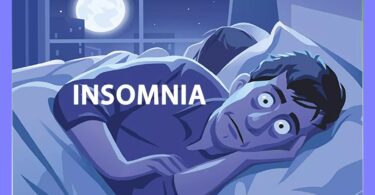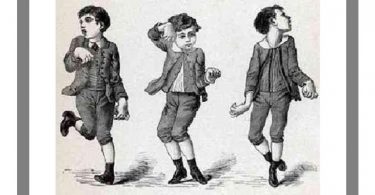Head injuries derive their importance because of the fact that many patients who die or who are disabled belong to the younger age groups. Head injuries account for 1% of all death, one fourth of deaths due to trauma and they are responsible for half of all deaths from road traffic accidents. Majority of the patients are young, adult males.
Classification of head injury
I. Based on the clinical type
1. Open
2. Closed
II Based on type of injury
- Blunt injury — acceleration, deceleration
- Missile injuries
Open head injury
The term open head injury is used to denote a type of injury in with there is a fracture of the skull associated with tear of the Dura and arachnoid, resulting in cerebrospinal fluid leak either to the external environment or into one of the potentially infective areas in the base of the skull, e.g. Cerebro Spinal Fluid — CSF rhinorrhoea or otorrhoea.
Closed head injury
A closed head injury is one where there is no such leakage. The advantage of this classification is that is helps the treating physician to recognize a group of patients who are likely to develop an infective complication following the head injury and he can initiate measures to prevent it.
Blunt head injury
Blunt injuries depending on the severity of impact can result in an open or closed head injury. Missile injuries ten to result in an open head injury most often.
- The brain is protected by a bony box which has a vault and base of the skull. The base of skull in contrast to the vault is a rough terrain due to the various bony prominences, ridges and foraminae.This factor is important in causing extensive brain damage to the brain in acceleration/deceleration type in injuries. In addition to the liner acceleration/ deceleration, rotational acceleration is also capable of producing damage to the brain as the brain swirls about inside the skull, such injuries result in maximal damage at interface between structures of different densities such as grey matter-white matter junctions.
Pathology
The pathological changes due to trauma to the brain can be classified into primary and secondary.
Primary lesions
- Diffuse neuronal damage
- Shearing lesions
- Contusions and lacerations
Secondary lesions
- Swelling
- Hemorrhage
- Extradural
- Subdural
- Intracerebral
- Infection
Primary lesions
- Diffuse neuronal damage is the most constant feature of blunt injuries. Immediately after an injury no changes may be seen. But changes begin after 14 hours of injury and maximum effects may last up to one week. Prolonged unconsciousness may follow injuries which produce only diffuse neuronal damage without any obvious macroscopic changes. Shearing lesions of the nerve fibres account for some severe injuries without any conspicuous changes to naked eye examination of the brain (cerebral concussion). Wide spread degeneration of white matter occurs without much changes in the cortex or brainstem. These patients have spasticity in all four limbs after injury and when they regain consciousness they are found to be severely demented.
- Contusion and lacerations are the obvious naked eye changes seen after injuries and were thought to be the main injuries before diffuse neuronal damage and shearing lesions were described. Contusions are seen on the summit of the gyri which get injured against the bone. The overlying pia is torn and the blood seeps into the subarachnoid space. A bleeding cortical vessel may result in the formation of an acute subdural hematoma or intra -cerebral hemorrhage. Brain oedema which develops surroundings the contusion and lacerations is the one that determines the outcome. Most often contusions are seen at the tips of the frontal and temporal lobes; over corpus callosum, superior and anterior surfaces of cerebellum and anterior surface of brain stem.
Secondary Lesions
Brain swelling
- This is a vague term applied to increase in brain bulk due to both Oedema and venous congestion. It is aggravated by hypoxia or respiratory insufficiency which may be due to associated lung injury or obstruction to upper respiratory passages. Sometimes such a swelling can lead to severe brain compression which is difficult to relieve, since there is no single mass lesions.
Intracranial hemorrhage
- Extradural or subdural hemorrhages may develop as a clean cut secondary event, even though bleeding may have started at the time of injury. These cause compression of brain, secondary rise in intracranial pressure and can cause death if not detected and treated early.
Infections
- All open head injuries are liable to result in intracranial infection either as generalized meningitis or focal infection such as subdural empyema or brain abscess, osteomyelitis of skull. After closed head injuries, infection of a subpericranial blood clot may result in Pott’s puffy tumor. When infection supervenes on an already injured brain, it may retard the recovery or may even lead to death. Hence, it becomes mandatory to treat all infections vigorously
Management and treatment of head injury symptoms with homeopathy – Homeopathy is one of the most popular holistic systems of medicine. The selection of remedy is based upon the theory of individualization and symptoms similarity by using holistic approach. This is the only way through which a state of complete health can be regained by removing all the sign and symptoms from which the patient is suffering. The aim of homeopathy is not only to manage and treat head injury symptoms but to address its underlying cause and individual susceptibility. As far as therapeutic medication is concerned, several medicines are available for head injury symptoms management and treatment that can be selected on the basis of cause, sensation and modalities of the complaints. For individualized remedy selection and treatment, the patient should consult a qualified homeopathic doctor in person. Some important remedies are given below for head injury symptoms treatment and management:
Belladonna, Cicuta Virosa, Helleborus Nig, Natrum Sulph, Opium, Arnica, Bryonia, Carbo Veg, Chamomilla, Lachesis, Phosphorous and many other medicines.






My brother is suffering from sever head injury, after a road accident, close injury, subdural hemorrage, gone to COMA in July 2000. after 6 months got consciousness but with quadro paraplegia..slowly recovered by rehabilitation therapy but still bed ridden, right side paralyzed though major damage in right temporal lobe, may be due to infarcts or contusions in brain stems, sufferings from seizures or fits intermittently. tried Natrum sulph, Arnica,Opium, cannibis indica etc. but no significant improvements..can you help him..
My mother have subdural hematoma due to home abuse she have right side paralysis ,she can’t talk walk she can’t stand, sit alone.please give homeopathic medicine
I would try Arnica 200C. If that does nothing, I would think of Nat-sulph 200C or Hypericum. In that order. One dose and wait.